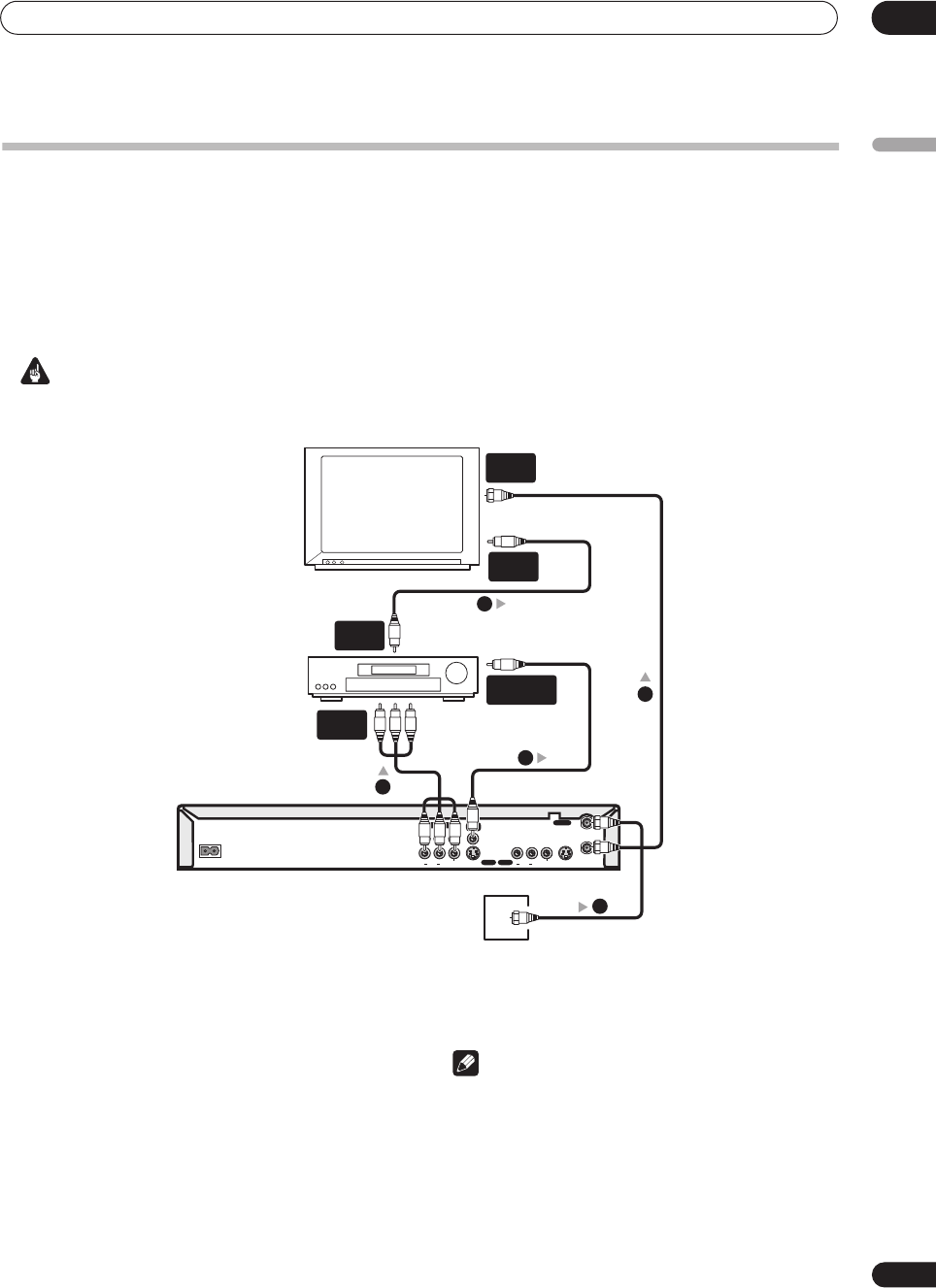
Connecting up
02
15
En
English
Connecting to an AV amplifier or receiver
To enjoy multichannel surround sound you need to connect this recorder to an AV amp/receiver using the digital
coaxial output. In addition to the digital connection, we recommend also connecting using the stereo analog
connection.
You’ll probably also want to connect a video output to your AV amp/receiver. Use the standard (composite) video
output (as shown here), or the S-video or component video connections.
See also
Audio Out
on page 51 for how to set up the digital audio output. (Noise may be output from your speakers if
the recorder is not set up to work with your AV amp/receiver.)
Important
• Do not connect this recorder to your TV ‘through’ your VCR or other component using A/V cables. Always connect
it directly to your TV.
1 Connect RF antenna cables as shown.
This enables you to watch and record TV channels.
2 Connect the AUDIO and VIDEO OUTPUT jacks on
this recorder to a set of audio/video inputs on your
AV amp/receiver.
3 Use a coaxial digital audio cable (not supplied) to
connect the COAXIAL DIGITAL OUT jack on this
recorder to a coaxial digital input on your AV amp/
receiver.
This enables you to listen to multichannel surround
sound.
4 Connect the AV amp/receiver’s video output to a
video input on your TV.
Note
• The diagram shows standard video connections, but
you can alternatively use the S-video or component
video connections if they’re available.
• If your AV amp/receiver doesn’t have a coaxial digital
input, but has an optical type, converter boxes that
convert from coaxial to optical are available at
specialist audio dealers.
RL
YP
B
P
R
AUDIO VIDEO
DIGITAL
OUT
OUTPUT INPUT 1
VHF UHF
S-VIDEO S-VIDEOVIDEO
IN
OUT
RL
AUDIO
AC IN
COMPONENT VIDEO OUT
AV amp/
receiver
TV
VHF/UHF
IN
VIDEO
IN
VIDEO
OUT
A/V
IN 1
DIGITAL IN
COAXIAL
2
4
1
3
Antenna/cable TV
wall outlet
1
DVR-230_KU.book Page 15 Thursday, January 27, 2005 2:42 PM


















